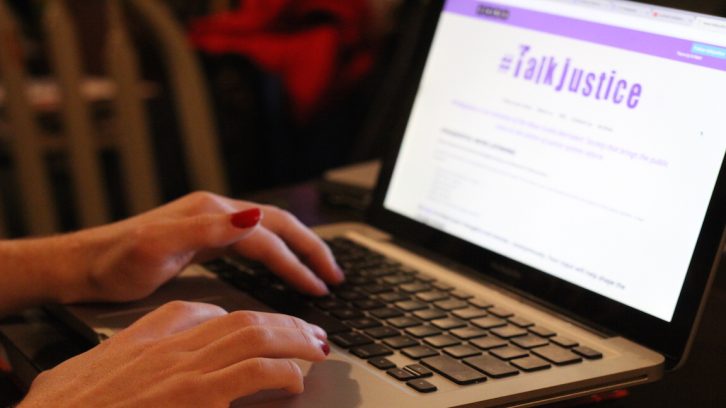Justice
Program moves online to ask community about justice
TalkJustice launches its second phase online

caption
TalkJustice want the community to share stories about justice through the project's website
caption
The TalkJustice program was launched in 2014.The Nova Scotia courts is expanding its use of technology to gather Nova Scotians’ experiences with the justice system.
The TalkJustice project was launched in 2014 by the Nova Scotia Barristers’ Society, which regulates the law profession in the province. The second phase was launched Thursday in partnership with the Nova Scotia Access to Justice Coordinating Committee (A2JCC).
The goal of the project is to understand what problems the community has with the legal system.
“We have to first hear the voices of people in our community, and the TalkJustice initiative was a mechanism to do just that,” says Chief Justice Michael MacDonald, co-chair of the A2JCC.
When TalkJustice was first launched, there were community meetings and interviews with organizations and individuals. The challenges that have been reported are varied, including transportation to court for impoverished people, language barriers and a poor understanding of the justice system.
The barristers’ society and A2JCC are now using SenseMaker software to translate the community’s stories into data through www.talkjustice.ca and their SenseMaker Collector app. The website has been up since September and is now fine-tuned for the launch.
Nova Scotians can now share their stories through the site. Jennifer Stairs, spokesperson for the courts, encourages community members to report their stories regularly.
“The way the software works is it will group things into themes and patterns,” says Stairs. “You can see our problems or where we’re doing something right.”
Paper copies of the questionnaire are available through the Nova Scotia Barristers’ Society.
MacDonald says the software interprets the stories and that the data analysis will help to eliminate the bias that occurs with human interpretation.
“I think that’s very important,” he says. “If I were to hear your story, I might superimpose my life experience and that may lead me to missing the point.”
Stairs says the findings will be used for “safe to fail” experiments that will help legal organizations try out new approaches to enhancing the justice system.
In previous sessions it was determined, through community feedback, that legal reporting reflected a bias on issues of poverty and race. In response, MacDonald says, the A2JCC facilitated a session for journalists on Jan. 26 at the University of King’s College with leaders from the African-Nova Scotian, immigrant and Indigenous communities. Topics discussed by speakers were varied, but included determining which voices represent the African-Nova Scotian community and perpetuating the “narrative of black danger.”
Stairs says the TalkJustice project targets all aspects of legal services and justice and is not limited to individuals going through the court system.
“One of the things we heard during the first phase is that justice means a lot of different things to different people,” says Stairs. “It’s not just the criminal justice system that we’re working on; it’s experiences they’ve had with legal services or the justice system, which really opens it up to a lot of other things.”
Organizers of the TalkJustice program have held a meeting at the Mi’kmaw Native Friendship Centre and hired outreach facilitators to gather stories from other groups such as immigrants and African-Nova Scotians.
“We can’t do this from the barrister society office or from the courthouse,” says MacDonald. “We have to get out in the community and that will be the goal.”

